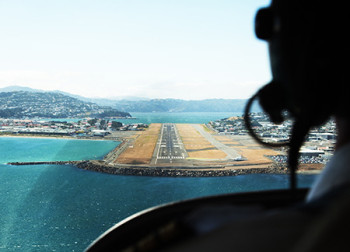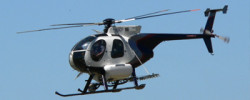Situational awareness is considered one of the most important concepts in human factors.

Photo: iStock/piskunov
We may hear that an accident or incident was the result of a ‘loss of situational awareness’ by the pilot or air traffic controller. But what does that mean – to lose situational awareness? And if we can lose it, how do we, as pilots, controllers, cabin crew or engineers, try to make sure we build strong situational awareness and then maintain it? And if we do lose it, can we get it back?
Firstly, let’s understand what it means. To have situational awareness means we have conscious knowledge of our environment and what’s happening in it. It means we understand all the different elements surrounding us, how they relate to each other, and what may happen as a result. By building and maintaining situational awareness, we can keep ourselves and those around us safe.
For an in-depth look at situational awareness, see:
Skybrary website(external link)
But if you’re a bit busy and just need a summary, then keep reading.
Having situational awareness doesn’t just happen by accident, it’s a skill to practise and keep practising. To build and maintain situational awareness you need to manage your workload, communicate with your team, think ahead, assess risk and clarify information to confirm your understanding.
If you’re finding that a situation is no longer making complete sense, you need to ask questions of yourself, speak up if you’re with others, verify information, and cross-check your way back to full awareness.
The ever-changing nature of aviation means there’s often a lot going on. And when you’ve got lots going on, it’s easy to miss something. Sometimes we can become so busy, we don’t realise when some elements of our environment are not getting the right amount of attention, or any attention at all.
Our brains can only cope with a certain amount of information at any one time. Once we reach overload, our brain will start to ‘dump’ things. What it chooses to dump can be quite random but may be really important!
So when workload is high we need to make sure we identify what information is important,when it’s important, and attend to that so that we can prevent our brains from dumping the vital stuff at an inopportune moment.
It may seem a bit counterintuitive, but not having enough to do can be as bad for maintaining situational awareness as having too much to do. Our brain needs a certain level of stimulation, otherwise it gets a bit bored and stops noticing things going on around us. Essentially we become ‘out of the loop’.
What’s worse, if our brain is suddenly required to move from boredom to dealing with an emergency within a few seconds, that can really cause us a lot of problems because it takes time to figure out what’s going on and decide what to do about it. This time could mean the difference between life and death.
If you’re in a low mental workload situation, such as pilots in the middle of a long-haul flight, or air traffic controllers with a low volume of traffic, it’s worth taking steps to keep your brain active such as making sure there is variation in tasks, setting goals, taking breaks and breaking up tasks when they are routine and monotonous.
Distraction is when our attention is drawn away from a task. Our brains actually have limited ability to divide attention amongst tasks, and generally, have to switch attention back and forth between tasks, so the idea of multi-tasking is a bit of a myth. We’re vulnerable to losing track of one task when our attention is drawn to a different one. Managing distractions effectively is necessary for safety.
Incomplete, inaccurate, and/or poorly communicated information can mean we don’t have everything we need to build and maintain a high level of situation awareness. This means we might draw the wrong conclusions and make incorrect decisions. You’ll find a dedicated section on communication in this NTS section of the website.
Stress and fatigue can also reduce the ability to make important observations, interpretations, and decisions, and if left unmanaged, can increase the risk of errors. Following IMSAFE guidelines is critical to preventing safety incidents and accidents.
When making decisions or judgements, humans use what are called ‘heuristics’. You might know these by the more common name ‘rules of thumb’. These are shortcuts our brains take to make information-processing more efficient. Being able to short-cut information processing is an amazing feature of our brains, but the downside is the potential for these rules of thumb to lead to biases.
All humans have limitations in our cognitive capabilities (i.e., attention, perception and information-processing). Some biases can distort the way we perceive situations, for example:
Inattentional blindness: This is when we don’t perceive something that would appear to others as ‘in plain sight’, often referred to as the ‘looked-but-failed-to-see’ effect. You can read one of our Vector articles about this bias:
Vector magazine: Looking without seeing [PDF 167 KB]
Try out your attention skills with this short exercise:
Confirmation bias: This is the tendency to search for evidence or interpret information consistent with an already-held view or understanding of the current situation, even if we’re now getting contradictory information. You’ll also find more detailed information on this bias in the Decision-making section.
You’ve become uncertain or uneasy about the situation or information.
You’re giving or receiving vague or incomplete information or statements.
You’re focused on one task or element, to the exclusion of everything else.
You’re frequently switching attention, not focused on the primary task.
You’re not following standard operating procedures or regulatory requirements.
Things are not going to plan – time, progress, workload.
Information from two or more sources does not agree or make sense.
While it might be hard to regain situational awareness, it’s not impossible. Firstly, you need to recognise that you no longer have the ‘big picture’ or are ‘out of the loop’.
Once you recognise that, try to expand your focus, become aware of whether you’re fixating on a particular task, and manage your workload. What are your standard operating procedures, and what are the rules? Stick to them. If you’re uncertain or confused, and can talk to someone else, then do!
Preventing loss of situational awareness is critical, because once it’s lost it’s hard to get it back. There are several fatal accidents and serious incidents that have occurred in New Zealand where reduced situational awareness was found to be a factor.

Photo: Rodney Maas
CAA occurrence 13/1524 [PDF 313 KB]
Beechcraft Baron G58
N254F
Departure from controlled flight
31 km south-west of Raglan - Tasman Sea
30 March 2013

Photo: nzcivair.blogspot.com
CAA occurrence 12/2242 [PDF 1.4 MB]
Hughes 369D
ZK-HXZ
Controlled flight into lake
Lake Sumner
21 May 2012
And here's another example - Canadian air traffic control loss of separation:
Air transportation safety Investigation report A18Q0069(external link)
NAV CANADA – Montréal Area Control Centre
Montréal/Pierre Elliott Trudeau International Airport, Quebec, 18 nm NE
16 May 2018